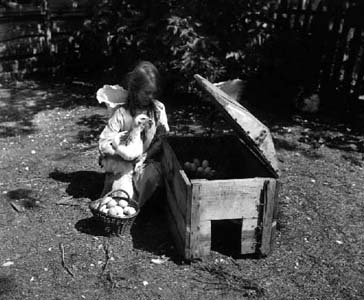Search | Image Archive | Reference | Communities | POV | Lesson Plans | Credits
 In 1916, the Manitoba Department of Agriculture commissioned Cyril Jessop, a farmer in the Gladstone area, to take a series of photographs depicting rural life in Manitoba. Two hundred and twenty-four of these images survive today in the Archives of Manitoba, and several are included in the TimeLinks collection.
In 1916, the Manitoba Department of Agriculture commissioned Cyril Jessop, a farmer in the Gladstone area, to take a series of photographs depicting rural life in Manitoba. Two hundred and twenty-four of these images survive today in the Archives of Manitoba, and several are included in the TimeLinks collection.
The goal of the Department in commissioning these photographs is not known, but can be inferred. By 1916, with the War in Europe, the Manitoba government has lost its primary recruiting grounds for new immigrants and was turning to the United States as its preferred source of immigrants. The province had previously invested little in recruitment there, and it is probable that the Jessop project was linked to promoting Manitoba to established American farmers.
Jessop's portrayal of rural life was idealized and pastoral. He took the photos over the course of one full year, and he took great pains to record the seasonal cycles of farm life. In addition to numerous pictures of bountiful crops and healthy livestock, he took photographs of homesteads. The houses depicted were both the neat cottages of newer settlers and the large dwellings of established and affluent farmers, but the collection portrays little that is worn or dirty. The message of progress and prosperity conveyed by these images is enhanced by photos that highlight automobiles and telephone lines, perhaps to allay the fear of isolation which may have kept people from prairie farms.
The overall impression is of a life that is healthy and happy and prosperous, and is often conveyed through the portrayal of children, especially girls, doing light chores or learning agricultural skills (and always in immaculate clothing).
While Jessop's photographs must be taken in context as immigration propaganda, they nonetheless convey a great deal about farm life in southwestern Manitoba in 1916, both in terms of the reality of agricultural communities and their aspirations.
Page revised: 29 August 2009